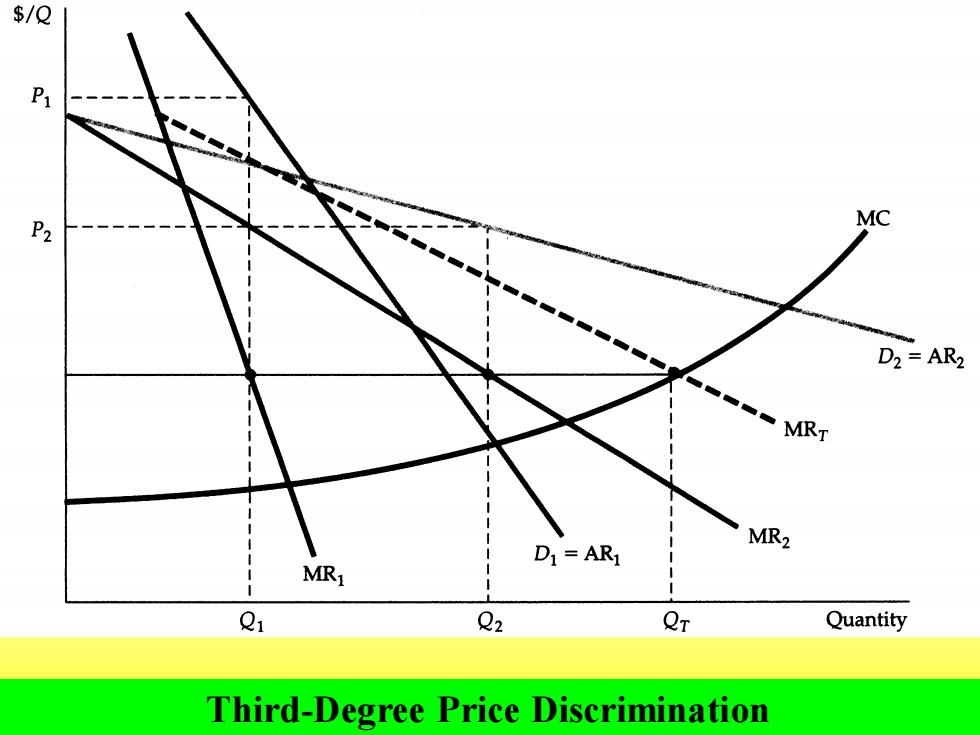
$/Q P2 MO D2=AR2 MRT MR2 D1=AR1 MR1 Q1 Q2 QT Quantity Third-Degree Price Discrimination
Third-Degree Price Discrimination
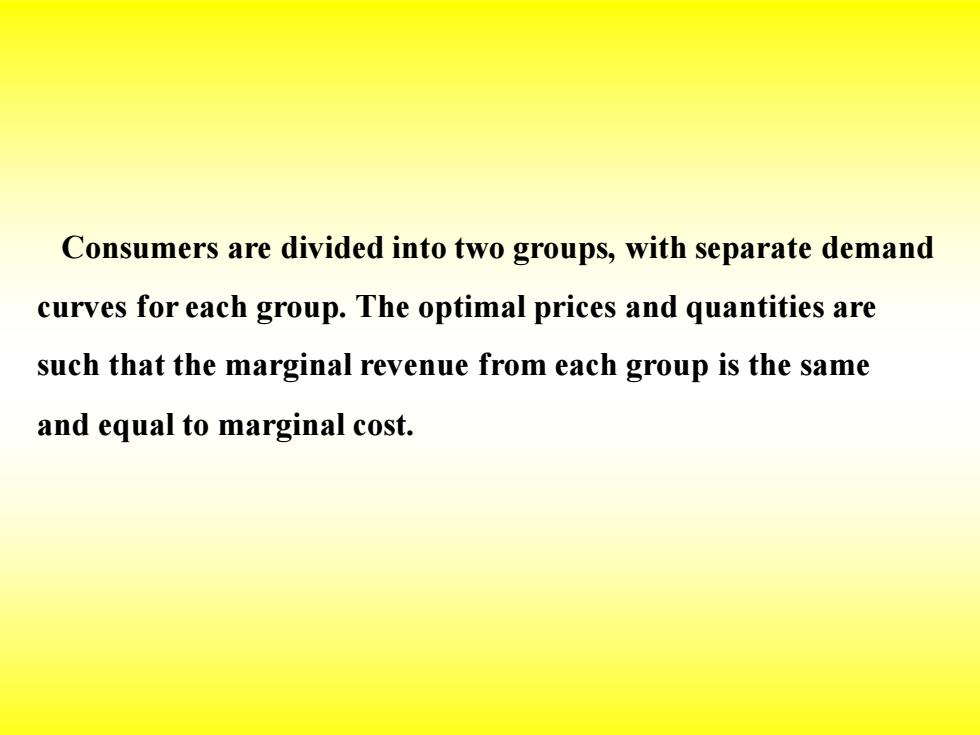
Consumers are divided into two groups,with separate demand curves for each group.The optimal prices and quantities are such that the marginal revenue from each group is the same and equal to marginal cost
Consumers are divided into two groups, with separate demand curves for each group. The optimal prices and quantities are such that the marginal revenue from each group is the same and equal to marginal cost
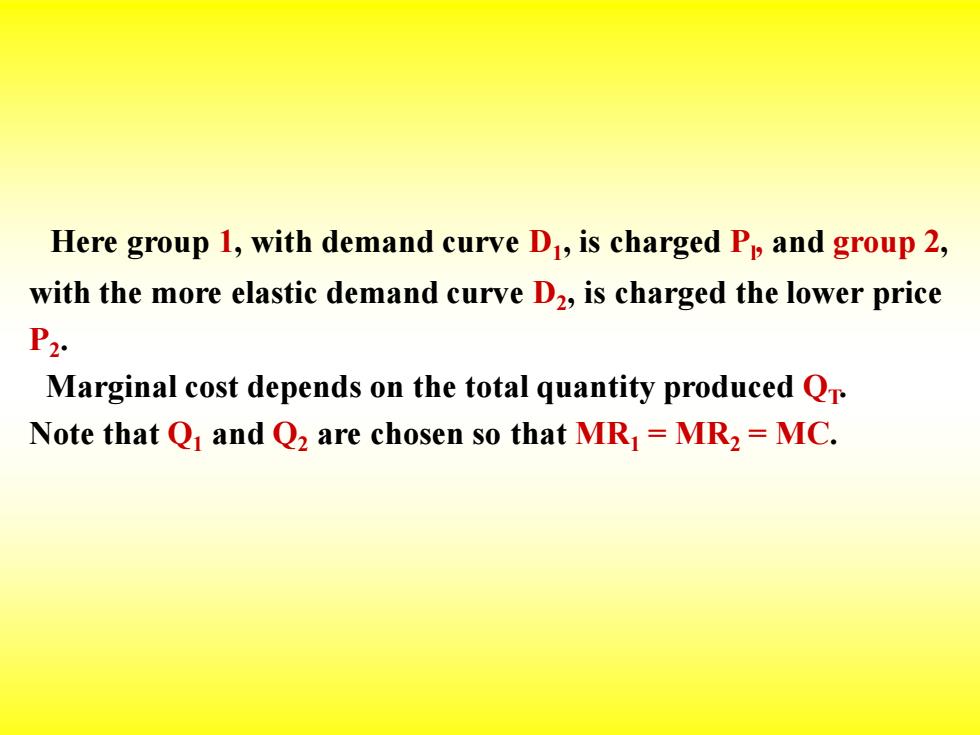
Here group 1,with demand curve D,is charged Pp and group 2, with the more elastic demand curve D2,is charged the lower price P2. Marginal cost depends on the total quantity produced Q Note that Q and Q2 are chosen so that MR1=MR2=MC
Here group 1, with demand curve D1 , is charged Pl , and group 2, with the more elastic demand curve D2 , is charged the lower price P2 . Marginal cost depends on the total quantity produced QT. Note that Q1 and Q2 are chosen so that MR1 = MR2 = MC
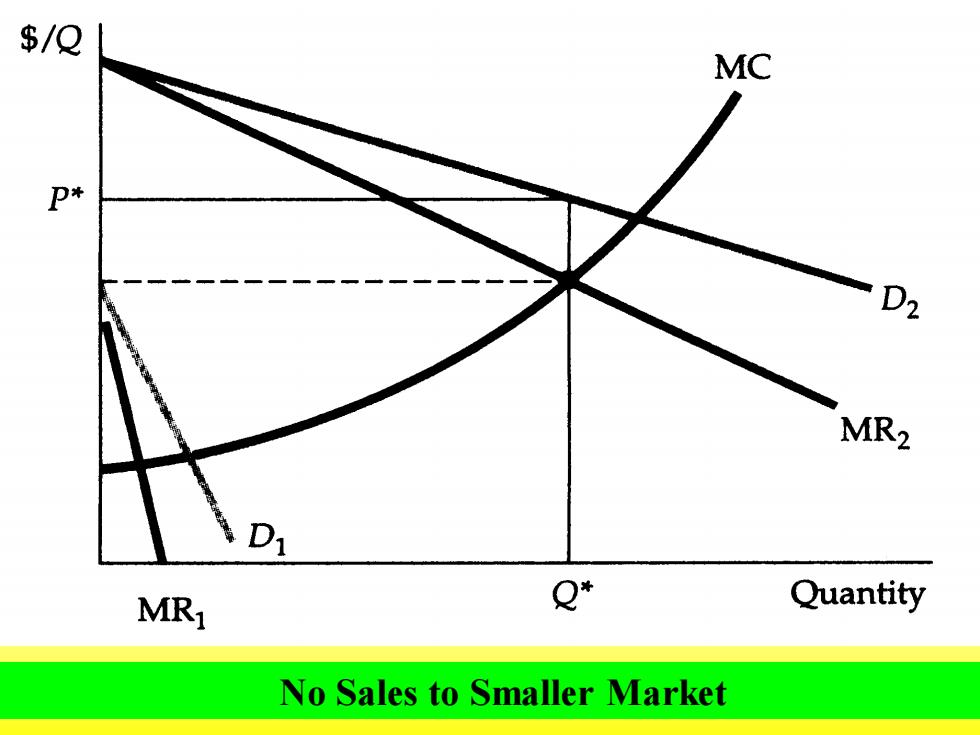
$/Q MC p* 02 MR2 MR1 Q* Quantity No Sales to Smaller Market
No Sales to Smaller Market
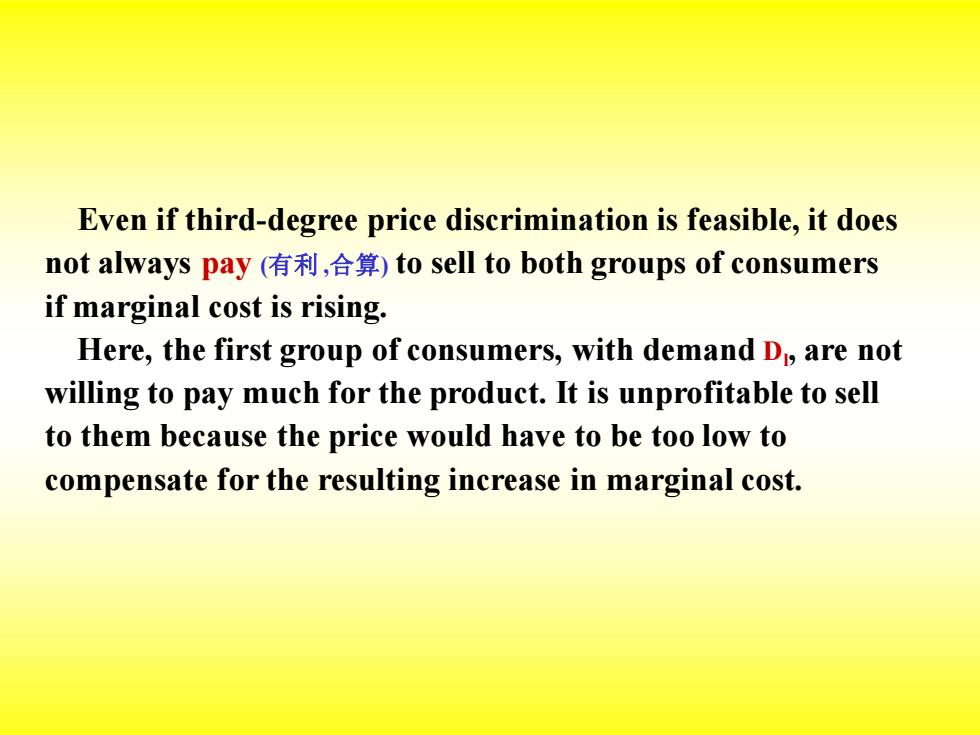
Even if third-degree price discrimination is feasible,it does not always pay(有利,合算)to sell to both groups of consumers if marginal cost is rising. Here,the first group of consumers,with demand D,are not willing to pay much for the product.It is unprofitable to sell to them because the price would have to be too low to compensate for the resulting increase in marginal cost
Even if third-degree price discrimination is feasible, it does not always pay (有利 ,合算) to sell to both groups of consumers if marginal cost is rising. Here, the first group of consumers, with demand Dl , are not willing to pay much for the product. It is unprofitable to sell to them because the price would have to be too low to compensate for the resulting increase in marginal cost